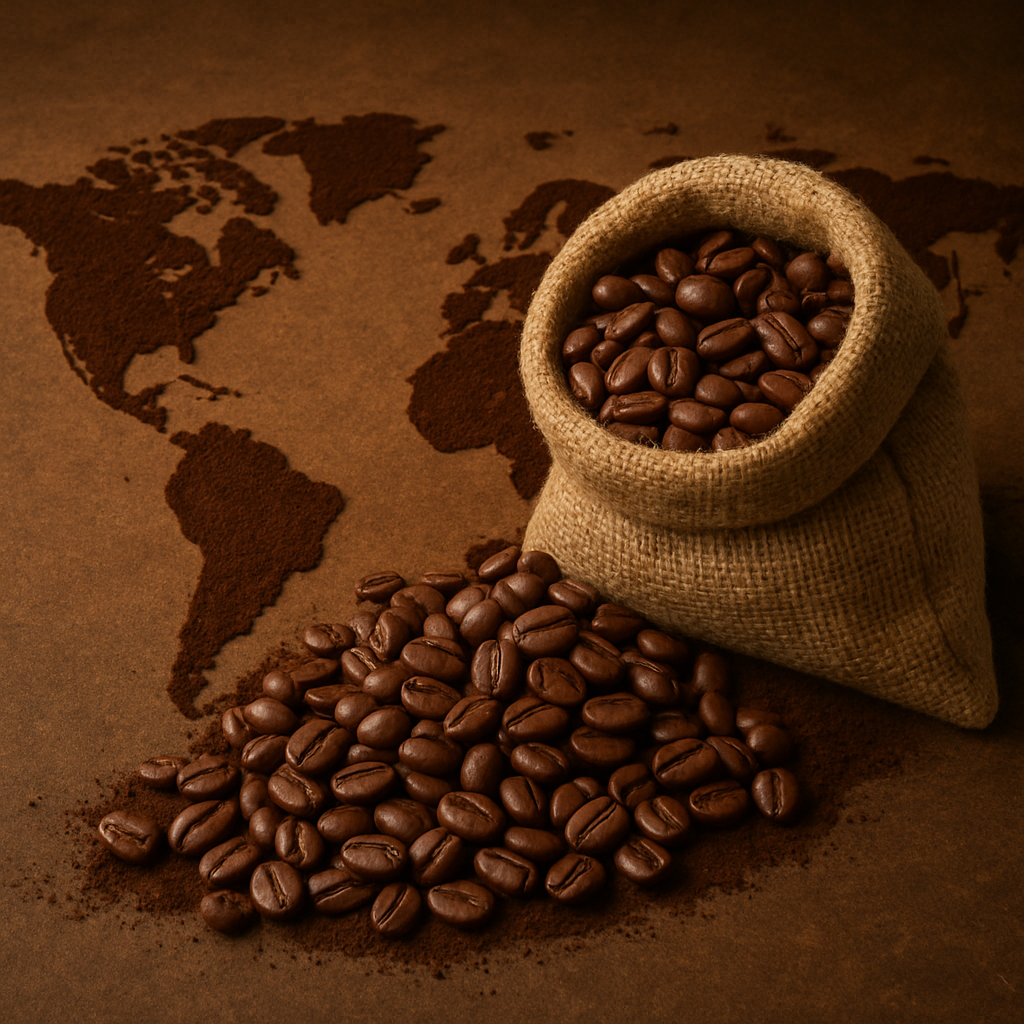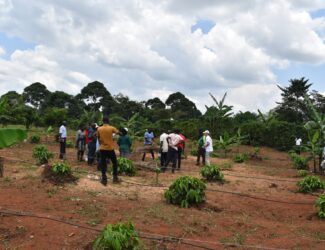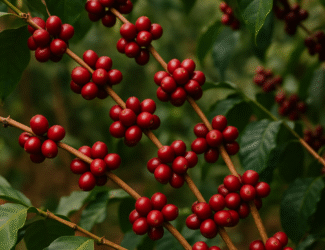
Coffee Prices Drop Sharply as Global Supply Improves and Demand Concerns Mount
Global coffee prices fell sharply on Friday, driven by signs of improving supply across major producing regions and growing concerns about weakening global demand. July arabica coffee futures (KCN25) dropped by -9.35 cents (-2.49%), while July ICE robusta coffee (RMN25) declined -106 USD (-2.13%), with robusta hitting a five-week low.
Market analysts attribute the retreat to stronger-than-expected harvest progress in Brazil and rising global inventories, which have eased concerns about tight supply that dominated earlier this year.
Brazil Coffee Sales Near Completion
One of the main bearish drivers this week was a report from Safras & Mercado, which confirmed that Brazil’s 2024/25 coffee crop sales were 97% complete as of May 13, exceeding last year’s pace of 94% for the same period. This signals strong producer participation and readiness to sell, easing pressure on supply pipelines.
Brazil remains the world’s largest coffee producer, and any change in its output or export behavior significantly impacts global pricing trends.
Inventories Surge in Both Arabica and Robusta
Coffee inventory levels monitored by the Intercontinental Exchange (ICE) continue to rise, reinforcing bearish sentiment. Robusta inventories climbed to a 7.5-month high, reaching 4,890 lots, while arabica inventories rose to 851,169 bags, marking a three-month peak.
These stock builds suggest supply is outpacing current demand, especially as key consumer-facing companies issue warnings about the effect of tariffs on their coffee costs.
Demand Pressured by Import Tariffs and Consumer Sentiment
Major global importers such as Starbucks, Hershey, and Mondelez International have raised concerns over the U.S. baseline 10% import tariff, which is expected to increase consumer prices and potentially suppress sales volumes.
As inflationary pressure persists, especially in developed markets, coffee consumption growth may stagnate—particularly in the premium and specialty segments where price elasticity is higher.
USDA, Conab, and Safras Raise Production Estimates
Fresh production forecasts have only added to the pressure. Brazil’s official crop forecasting agency Conab revised its estimate for 2025 coffee production to 55.7 million bags, up from 51.81 million in January. Safras & Mercado also raised its Brazil production outlook to 65.51 million bags for 2025/26, compared to the earlier 62.45 million bags estimate.
Meanwhile, the USDA has forecast that Honduras, Central America’s top coffee grower, will increase production by 5.1% year-on-year, reaching 5.8 million bags in the 2025/26 cycle.
Arabica Prices Find Temporary Support from Weather and Exports
Despite the broader bearish outlook, some short-term support for arabica prices came from lower-than-average rainfall in Minas Gerais, Brazil’s key arabica-producing region. Somar Meteorologia reported that only 0.8 mm of rain fell in the week ending May 10—just 16% of the historical average, potentially affecting bean development.
In parallel, Cecafé, Brazil’s coffee exporters council, revealed that April green coffee exports declined by -28% year-over-year to 3.05 million bags. Cumulative exports for the January–April period also dropped -15.5% y/y, signaling possible shipping delays or logistical challenges.
Vietnam Robusta Output Remains a Concern
The robusta segment, although weakened this week, is still underpinned by structural tightness. Vietnam, the world’s largest robusta producer, has faced weather-related production issues. The Vietnam Coffee and Cocoa Association recently revised its 2024/25 crop forecast down to 26.5 million bags, a sharp drop from the prior 28 million estimate.
Earlier data from the Vietnam General Statistics Office showed that 2024 exports dropped -17.1% y/y to 1.35 million metric tons, while 2025 exports from January through April also fell -9.8% y/y, totaling 663,000 MT. These figures point to continued output stress due to prolonged drought conditions.
Mixed Signals from USDA’s Global Coffee Outlook
The USDA’s biannual report, issued in December, painted a mixed picture for the global coffee outlook:
-
2024/25 world coffee production is forecast to increase +4.0% to 174.86 million bags, with arabica up 1.5% and robusta up 7.5%.
-
However, ending stocks are expected to drop -6.6% to 20.87 million bags, marking the lowest level in 25 years, which could still pose upside risk if demand strengthens unexpectedly.
The USDA also expects Brazil’s inventories to decline -26% y/y to 1.2 million bags by the end of the 2024/25 season, further complicating the supply-demand picture.
Volcafe Predicts Deficit in Arabica for 5th Straight Year
Adding to the complexity, coffee trader Volcafe slashed its 2025/26 forecast for Brazil arabica output by 11 million bags, down to 34.4 million bags, citing drought-related damage. The firm predicts a global arabica deficit of -8.5 million bags, the fifth consecutive year of shortfall, which could provide long-term bullish momentum if demand recovers.
Conclusion
Coffee prices are currently in retreat, as improving supply conditions in Brazil and rising global inventories weigh on market sentiment. However, persistent structural concerns—especially in the robusta segment due to Vietnam’s drought—and the long-term arabica deficit predicted by Volcafe hint that this bearish phase may not last.
Market participants are closely watching upcoming harvest reports, export volumes, and global economic data to gauge where prices may head next. For now, however, the coffee market is leaning toward oversupply, which is translating into pressure on futures contracts.



